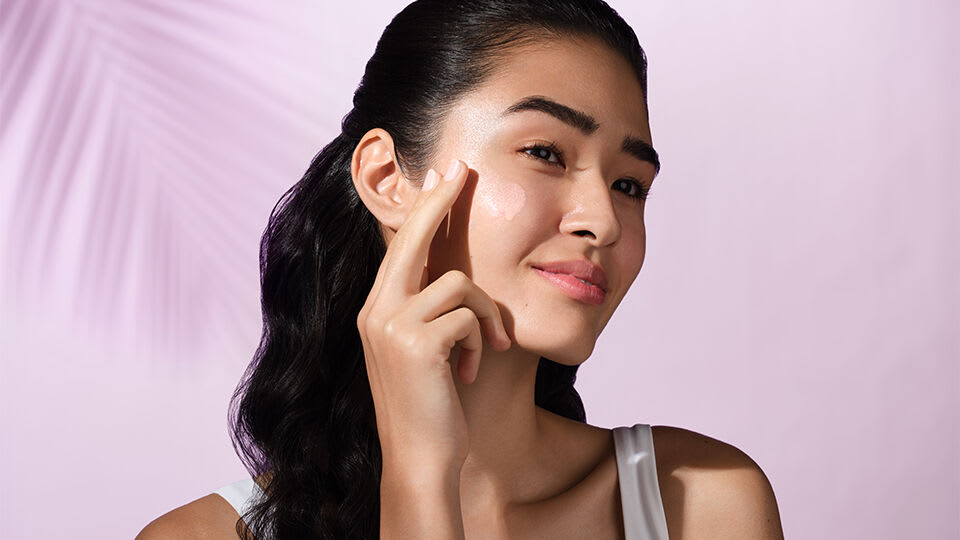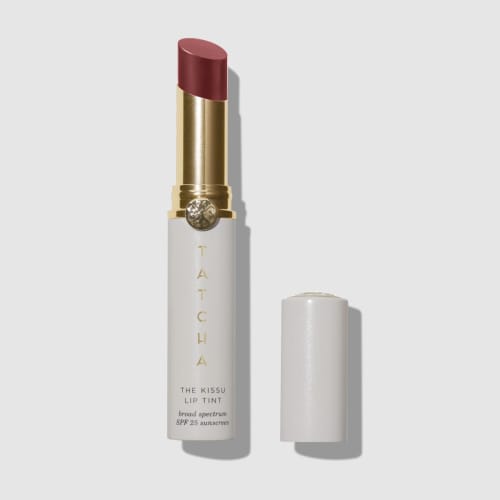Not all sunscreens are created equal, and Japanese sunscreens are famous for feeling great on skin. But which one is the best?

Sunscreen might be the most important aspect of a skincare routine. The main function of any sunscreen is the same: Each formula uses active ingredients to keep harmful ultraviolet rays from damaging skin. How this is done depends on where you are in the world and which type of sunscreen is right for your skin type.
In Japan, as with many Asian countries, sun protection is tantamount to the idea of beauty itself. Unlike in the United States, in Japan it’s not uncommon to see women carrying parasols on afternoon strolls, or donning long black gloves on a hot summer day, in effort to protect skin from the sun without using sunscreen. When it comes to topical sun protection, Japan has a reputation for producing some of the most elegant formulas on the sunscreen market—cost-effective, high SPF, with no dry-down or absorption time. Some of the best sunscreens in the world are Japanese, which begs a natural follow-up question: What is the best Japanese sunscreen?
But before we get into the best Japanese sunscreen for the face, let’s talk about the importance of using them and the ingredients to look for.
Why Is Sunscreen Important?
Any dermatologist worth their MD will tell you sunscreen is one of the best beauty products you can use—not only for cosmetic reasons, but for overall health. According to The Skin Cancer Foundation, prolonged exposure to ultraviolet (or UV) radiation is a major risk factor for skin cancer. But even a small amount of exposure can cause lasting problems.
There are two specific types of UV radiation. The first, UVB, causes sunburns requiring a specific after sun skincare routine. These rays have longer wavelengths, and are best associated with the damage they cause at the skin’s surface – reddening, blistering, charring – and they’re strongest when it’s sunniest. The second, UVA, causes skin aging. These rays have a shorter wavelength and go deeper into the skin, and they’re around all of the time, even when it’s cloudy. (This is why you have to wear sunscreen every day, even when the sun isn’t shining.)
When protecting yourself from the sun, you have to consider both UVA and UVB rays. Most sunscreens offer “broad spectrum” defense. But not all sunscreens, even all broad-spectrum sunscreens, are created equal.
Why Are Japanese Sunscreens So Good For Skin?
If you have ever seen a lifeguard in a movie with a band of chalky, thick sunblock painted across their face, then you know what a Japanese sunscreen isn’t. What lifeguards might be used to is called mineral sunscreen. These formulas use ingredients like zinc oxide to physically block the sun’s rays. (Hence the name “sunblock.”)
By contrast, many popular Japanese sunscreens are chemical sunscreens, which use ingredients that absorb and neutralize UVA and UVB rays. (On Asian SPF labels, you’ll often see “PA”, or Protection Grade of UVA, to indicate UVA protection, while the SPF number indicates UVB protection. The more plus signs, the better PA coverage.) These kinds of formulas tend to absorb into the skin faster—often within seconds, without needing to rub them in and then wait for them to set. A few minutes after applying a Japanese sunscreen, it's easy to forget you applied one at all.
Both mineral and chemical sunscreens are safe and widely used. But the reason Japanese or Asian sunscreens are considered best is that the lightweight formulas make them easier to use regularly, and the most effective kind of sunscreen is the one you want to use as often as possible. The fast-absorbing quality also makes them some of the best sunscreens for faces. It can be hard to layer makeup over some mineral formulas—but chemical formulas make this easy. And because they lack the white cast of a zinc oxide or titanium dioxide formula, they are flattering on all skin tones.
Why Are Japanese Ingredients So Beneficial?
Japanese sunscreens are beloved for many reasons, but their ingredient lists are at the top of the list. While their coverage is superior, the ingredients present in the formulas also intentionally support and benefit the skin. These skin-bettering ingredients can improve the skin tone, hydrate, and even visibly firm skin while protecting from UVA and UVB rays. Here are a few notable ingredients in Tatcha sunscreens.
- Niacinamide
A form of vitamin B3, niacinamide is an essential nutrient that helps visibly firm and even skin tone. It also has been shown to improve the look of dullness, strengthen and repair the skin barrier, restore moisture loss, and boost skin’s natural hydration levels.
- Hyaluronic Acid
A polysaccharide that naturally occurs in the skin, hyaluronic acid helps skin retain moisture for a hydrated, plump appearance. In addition to restoring skin’s moisture and volume, hyaluronic acid can help stimulate the production of collagen, the skin-firming protein. By jumpstarting the body’s natural collagen-making processes, hyaluronic acid helps keep skin looking fuller and more supple.
- Silk Extract
Rich in amino acids, silk extract closely parallels the amino acid structure of human skin. This extract provides a smoothing, protective veil of hydration, almost like a second skin without weighing it down.
- Wild Rose
Japanese wild rose helps noticeably tighten the look of pores. Plus, both the bloom and fruits have natural antiseptic qualities to help clarify, as well as hydrating and soothing elements that smooth the skin.
- KLEAIR Zinc Oxide
A high-transparency zinc oxide, KLEAIR is a trademarked revolutionary ingredient. This reef-safe filter is proven to be over two times more effective at free-radical protection than regular zinc oxide. While mineral filters can be difficult to blend into all skin tones, the high transparency of this specific zinc oxide helps Tatcha’s formula blend into skin more easily.
What To Look For In A Japanese Sunscreen
While Asian sunscreens are known for their brilliant advancements, not all formulations are created equal. Look for products that tout the following characteristics.
- Lightweight
Sunscreen used to be synonymous with gloopy, thick formulas. But today’s modern iterations are silky and lightweight. However, some SPFs can still feel quite oily and thick when applied. A light-as-air sunscreen will not only apply more easily and evenly, but it will make reapplication–ideally, every two hours when spending excessive time in the sun–a breeze, too.
- Nourishes Skin
Protection from UVA and UVB rays is first and foremost when it comes to SPFs. But if it could also include ingredients that nourish, hydrate, and even skin? Well, that’s just icing on the cake. Look for products that proudly list their skin-bettering ingredients.
- Plays Nice with Others
Some ingredients are all-stars, so powerful and potent, they can change skin for the better quickly. However, many of these superstar ingredients do not play nicely with others, like retinol. (Which is another reason to consider using a retinol alternative.) Instead, look for sunscreens that feature ingredients that work with many other ingredients and skin types, including hyaluronic acid, niacinamide, and silk extract.
- Works Well Under Makeup
Additionally, how the SPF is crafted and formulated will have a big impact on how well it works with other products in your skincare routine. While a sunscreen can be packed with beautiful ingredients, if it’s not tested and perfected to wear well (and work well with other products, like moisturizers, protective primers, and makeup), it’s likely you won’t enjoy wearing it and it will gather dust in your bathroom shelf.
The Best Japanese Sunscreen For Oily and Acne-Prone Skin
When we formulated Tatcha’s suncare products, we were inspired by lightweight, easy-to-use Japanese formulas, as well as the zinc-based physical sunscreens we grew up with. Our Silken Sunscreen combines a mineral block with a chemical filter for optimum sun protection. The fast-absorbing cream formula blurs pores with SPF 35 protection and PA+++ and dries down matte, making it an ideal Japanese sunscreen for oily skin. It also layers beautifully under makeup. It is one of the best Japanese sunscreens for acne-prone skin, too.
The Best Japanese Sunscreen For Dry Skin
Tatcha’s newly updated Silk Sunscreen feels like a Japanese sunscreen, but is made with zinc oxide for SPF 50 PA++++ physical sun protection. It’s also slightly tinted, but blends in sheer, eliminating the white cast sometimes found in other physical sunscreens. The light, liquid formula is chock full of humectants, like hyaluronic acid and squalane, that bind to water and provide a dewy skin finish. It’s good for all skin types, but can be extra helpful to those with dry skin who need a little extra hydration.
The Best Japanese Sunscreen For Sensitive Skin
Sensitive skin can be triggered by many sunscreens, causing irritation, redness, and itchiness. This is where our Silk Sunscreen steps in to save the day (and the skin). Made with ingredients that support and nourish the skin, the Silk Sunscreen is best for sensitive skin since it provides a veil of protection with broad-spectrum SPF 50 coverage with the highly effective KLEAIR™ zinc oxide (a mineral filter known for its skin-soothing properties). This is one of the best Japanese mineral sunscreens you can find on the market.
The Best Japanese Sunscreen For Mature Skin
Mature skin usually craves hydration, which the Silk Sunscreen proudly provides via hyaluronic acid, squalane, silk extract, and camellia leaf extract. Additionally, the formula addresses signs of uneven skin, a common woe with aging, thanks to niacinamide. Beyond the ingredients, the SPF 50 protection blends in sheer, making it one of the best sunscreens for mature skin by leaving a beautiful dewy finish.
The Best Japanese Sunscreen For Combination Skin
Supporting the mercurial nature of combination skin can be tricky for all products, as you want formulas that aren’t too rich but also provide a hefty dose of hydration. That can be a tall order for sunscreens, too. But the Silken Sunscreen is great for combination skin as it blurs pores and dries matte—great for excess oil – and also addresses hydration, calmness, and antioxidant protection with silk and loquat leaf extracts.
The Best Japanese Sunscreen For Lips
Sunscreen…for the lips?! Sunburned lips are surprisingly a common woe with excessive sun exposure, which can lead to not only discomfort and irritation, but also premature aging (including fine lines around the lips) and even skin cancer. Like sunscreen for the skin, sunscreen for the lips is one of the secrets to achieving healthy-aging. The ultimate method for avoiding sunburned lips is prevention: by using a lip balm formulated with SPF. Try the new Kissu Lip Tint, which features SPF 25, plus silk protein and botanical lanolin for a pout that is nourished and protected, making it one of the best Japanese lip balms. If that wasn’t great enough, the Kissu Lip Tint also features a flattering flush of color, coming in three universal shades, building from sheer to medium coverage in just a few easy swipes. Learn how to care for your lips and applying a tinted lip balm will be an easy and flattering step in your ritual.
How to Apply the Best Japanese Sunscreen
Once you’ve found the right Japanese sunscreen, consider adding an exfoliation step to your routine to help prepare your skin and be mindful of when to apply sunscreen in your skincare routine.
The best sunscreen out there is the one that works for you. At the end of the day (or, really, at the beginning of the day, and even multiple times throughout the day) it just matters that you use it.
Once you’ve found the right Japanese sunscreen, consider adding an exfoliation step to your routine to help prepare your skin and be mindful of when to apply sunscreen in your skincare routine.
The best sunscreen out there is the one that works for you. At the end of the day (or, really, at the beginning of the day, and even multiple times throughout the day) it just matters that you use it.




